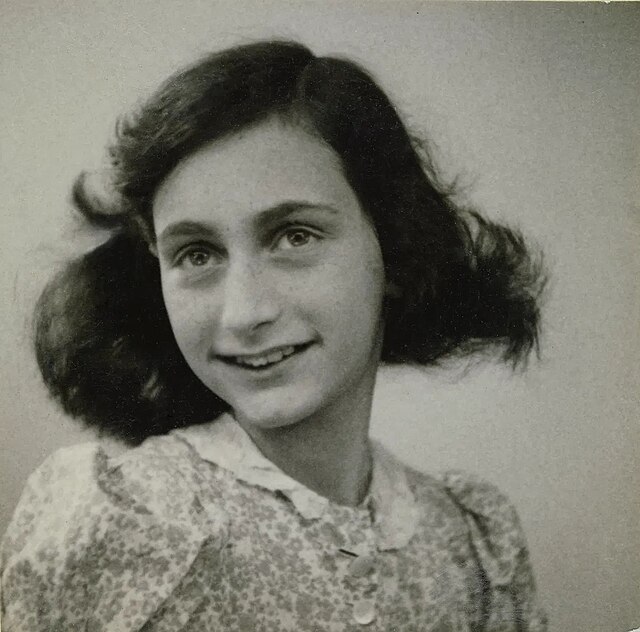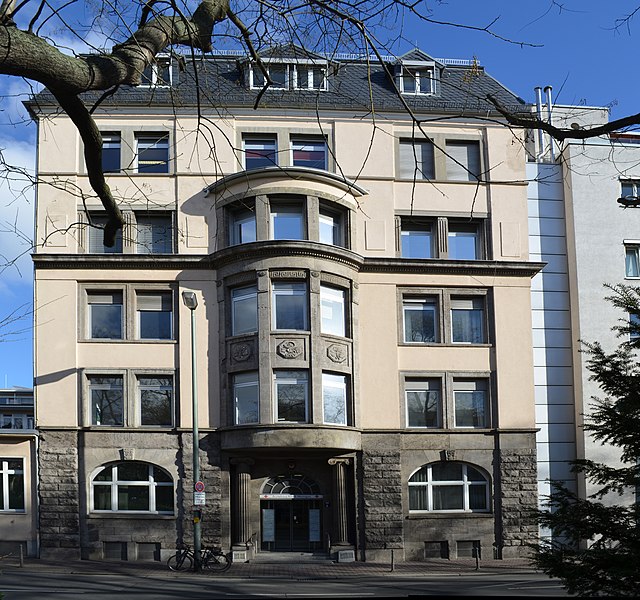Bloeme Evers-Emden was a Dutch lecturer and child psychologist who extensively researched the phenomenon of "hidden children" during World War II and wrote four books on the subject in the 1990s. Her interest in the topic grew out of her own experiences during World War II, when she was forced to go into hiding from the Nazis and was subsequently arrested and deported to Auschwitz on the last transport leaving the Westerbork transit camp on 3 September 1944. Together with her on the train were Anne Frank and her family, whom she had known in Amsterdam. She was liberated on 8 May 1945.
Portrait of Bloeme Emden with a Jewish star, c. 1942
Evers-Emden's son Raphael Evers, Rabbi of Düsseldorf
Annelies Marie Frank was a German-born Jewish girl who kept a diary in which she documented life in hiding under Nazi persecution during the German occupation of the Netherlands. She is a celebrated diarist who described everyday life from her family hiding place in an Amsterdam attic. One of the most-discussed Jewish victims of the Holocaust, she gained fame posthumously with the 1947 publication of The Diary of a Young Girl, in which she documents her life in hiding from 1942 to 1944 — it is one of the world's best-known books and has been the basis for several plays and films.
Frank in May 1942, two months before she and her family went into hiding
Anne Frank at the 6th Montessori School, 1940
Photographs of Anne Frank, 1939
1929: Anne Frank's birthplace, the Hospital Maingau of the Red Cross, in 1929 still known as Vaterländisches Krankenhaus (the hospital of the "Patriotic Women's Association") in Frankfurt-Nordend






